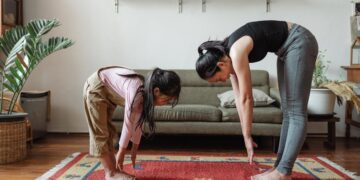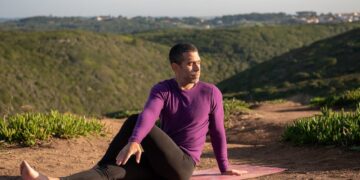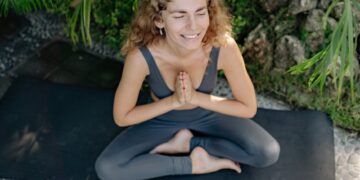5 Proven Mindfulness Techniques for Stress Relief
In the hustle and bustle of today’s world, stress is our unwelcome companion pulling us into a whirlpool of negative emotions and fatigue. Whether it’s looming deadlines or crammed schedules, we are often in need of effective strategies to calm the chaos and reclaim our peace of mind. Here enters the powerful practice of mindfulness, an ancient technique rooted in the meditation traditions of Buddhism but perfectly applicable to modern life. These techniques do not require any special equipment or extensive training; they are simple, effective, and can be integrated into your daily routine to help manage and relieve stress. Let’s explore five proven mindfulness techniques that can transform your daily stress into a more serene life experience.
1. Mindful Breathing: The Anchor to Present Moment
What It Is: Mindful breathing, one of the most basic yet powerful aspects of mindfulness, involves paying close attention to the natural rhythm of your breath. This technique can anchor you in the present moment and deter stress-induced thoughts and worries that may be consuming your mind.
How to Do It:
- Find a comfortable and quiet place to sit or lie down.
- Close your eyes to remove external distractions.
- Take a slow, deep breath through your nose, feeling your chest and belly expand.
- Exhale slowly through your mouth or nose, whichever feels more comfortable.
- Concentrate on your breath, noting how the air feels cooler when you inhale and warmer when you exhale.
- If your mind wanders, gently redirect your focus back to your breath.
- Continue this for several minutes, gradually increasing the duration as you practice more.
Benefits: This method helps reduce stress by bringing your attention away from what’s troubling you and back to your body. It’s particularly helpful when feeling overwhelmed or anxious.
2. Progressive Muscle Relaxation: Ease the Physical Stress
What It Is: Stress isn’t just mental; it manifests physically in our muscle tensions. Progressive Muscle Relaxation (PMR) is a technique where you tense each muscle group in your body but release the tension immediately. This helps in recognizing the difference between tension and relaxation.
How to Do It:
- Start in a comfortable seated or lying position.
- Begin with your feet and gradually move up to your face.
- Tense each muscle group for about five seconds then relax for 30 seconds. Notice the sensation of release.
- Mentally say “relax” as you release each muscle group to enhance the effect.
Benefits: PMR can be particularly helpful in breaking the loop of physical discomfort led by stress which, in turn, can enhance your mental focus and emotional resilience.
3. Mindful Walking: Turn a Simple Walk into a Therapeutic Exercise
What It Is: Mindful walking transforms a regular stroll into a meditative experience. It’s about walking slowly and being fully aware of each step you take – every sensation, every breath, and everything around you.
How to Do It:
- Choose a peaceful place for your walk – it could be a quiet street, park, or even your backyard.
- Focus on your body movements, the sensation of your legs moving, your feet touching the ground, and your arms swinging in motion.
- If your mind starts wandering, bring your attention back to the movements or sensations of the body.
- Optionally, synchronize your breathing with your steps for a deeper experience.
Benefits: Mindful walking offers the physical benefits of mild exercise while also providing the calming effect of mindfulness.
4. Body Scan Meditation: Awareness from Head to Toe
What It Is: The body scan is a method where you mentally scan yourself from head to toe, observing any discomfort, tension, or sensation without trying to change it.
How to Do It:
- Lie down on your back in a quiet space.
- Close your eyes and take a few deep breaths to ease into a relaxed state.
- Slowly direct your attention to the top of your head and then gradually move down to your feet, observing any sensation that arises.
- Don’t try to change what you feel, simply observe. This acknowledgment without intervention encourages a state of peaceful acceptance.
Benefits: This technique helps in identifying where you hold your stress and gently relieves tension from those areas.
5. Guided Imagery: Visualize Your Way to Calm
What It Is: Guided imagery involves focusing your imagination on calming and peaceful images. It’s a powerful way to shift your mind away from stress.
How to Do It:
- Find a quiet place to sit or lay down.
- Close your eyes and imagine a scene that is calm and happy. This could be a beach, a favorite quiet spot, or anywhere that gives you peace.
- Engage all your senses to deepen the experience. Imagine smelling the ocean, feeling the sun, hearing the waves.
- You can use recordings of guided imagery exercises or scripts if you find it difficult to visualize on your own.
Benefits: By occupying the mind with calming thoughts, guided imagery can significantly reduce symptoms of stress and anxiety.
Conclusion
Implementing these five proven mindfulness techniques for stress relief can lead to substantial improvements in your overall well-being. Each technique provides a unique way to ground yourself in the present moment and alleviate the pressures that daily life can bring. Whether it’s through mindful breathing, progressive muscle relaxation, mindful walking, body scan meditation, or guided imagery, you possess the ability to navigate and manage your stress effectively. Remember, the key is consistency and patience. As with any new skill, practicing mindfulness takes time, but its benefits are well worth the investment.


































































